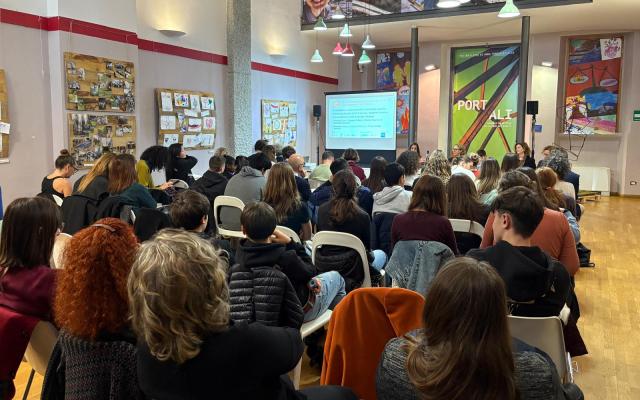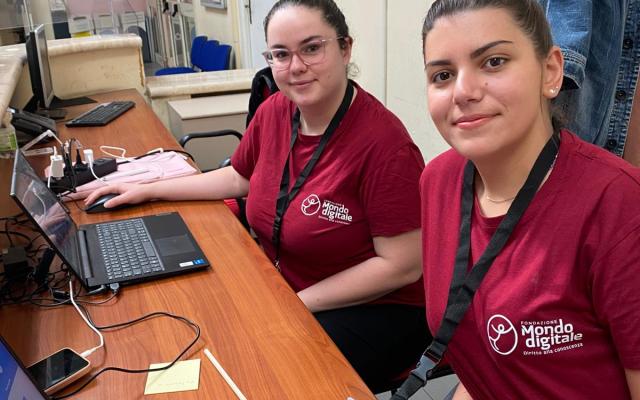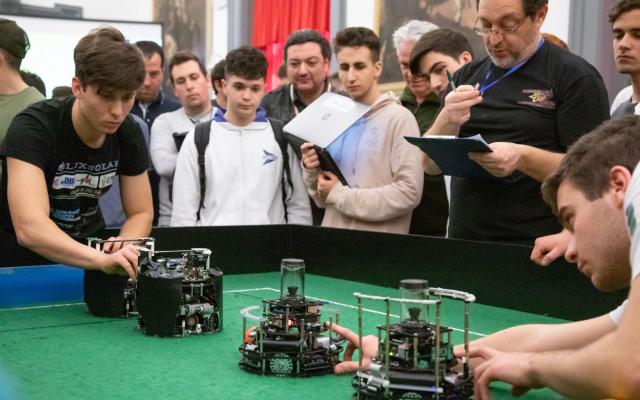Ennio Chiatante speaks about artificial intelligence, automation and human-machine interaction at RomeCup 2025
With the sharing of the speech by Ennio Chiatante, European delegate for the International Federation of Robotics, we continue our series of in-depth articles dedicated to RomeCup 2025 (7-9 May). In his contribution to the inaugural conference at Roma Tre University, Chiatante outlined the two main directions of robotic innovation: on the one hand, the ability to operate in increasingly complex and less structured environments; on the other, the possibility of making technology more intuitive and accessible, bringing machines closer to humans.
We are making this content available to schools so that we can continue to reflect together on the evolution of the relationship between humans and intelligent technologies.
Watch the video of the speech
Discover the key points and explore the themes that emerged from RomeCup 2025
Thank you, good morning everyone.
So, the application of artificial intelligence in the field of robotics, or more generally in industrial automation, has two main areas of application. The first is to enable machines and robots to adapt and operate in less structured environments than those traditionally found in automation.
The second is to bring machines closer to humans, in the sense that it is no longer humans who have to understand how a machine works or how to programme a robot, but machines, thanks to artificial intelligence, that are able to approximate the way humans act, in a more intuitive way.
In my opinion, these are the two fundamental principles of the use of artificial intelligence in robotics: on the one hand, adaptation to complex and less structured contexts; on the other, the ability of the machine to interpret human behaviour in order to be programmed more easily.
This makes it possible for people who have not necessarily studied programming to use robotics. For us, this is one of the fundamental elements of the use of artificial intelligence in the world of robotics and, more generally, in industrial automation.
Moderator: I would like to ask you a question before moving on to the second speaker. Historically, we have tried to build robots in our own image, and the same is happening with artificial intelligence, emulating the functioning of the human brain. In this ‘imitation game’ that we have been playing for some time, why have we felt the need to make them like us? Not all of them, of course...
Answer: I would say that human beings are, if I may say so, the most versatile ‘machines’ we know. Their ability to adapt and face new problems makes them the most efficient and adaptable system.
It is therefore natural that the development of robotics has been inspired by this model. Some solutions, in fact, are also inspired by the animal world, not just the human world.
Moderator: A few days ago, there was news of a hospital in China that is almost entirely robotised, with robot doctors and nurses. This news is circulating on social media and has little basis in reality, or are we really at the beginning of something new?
Answer: There is certainly a lot of research underway to develop humanoid robots. But I think we are still quite far from a concrete and, above all, efficient result.
I don't think that building humanoid robots is the best way to address some of the challenges we want to solve. Humans – and therefore humanoids – are extremely complex objects, and this complexity is not always the best solution. Today, the most efficient robots are not humanoid ones at all. Take a car, for example: fortunately, it is still much more complex than what robots can do at the moment.



